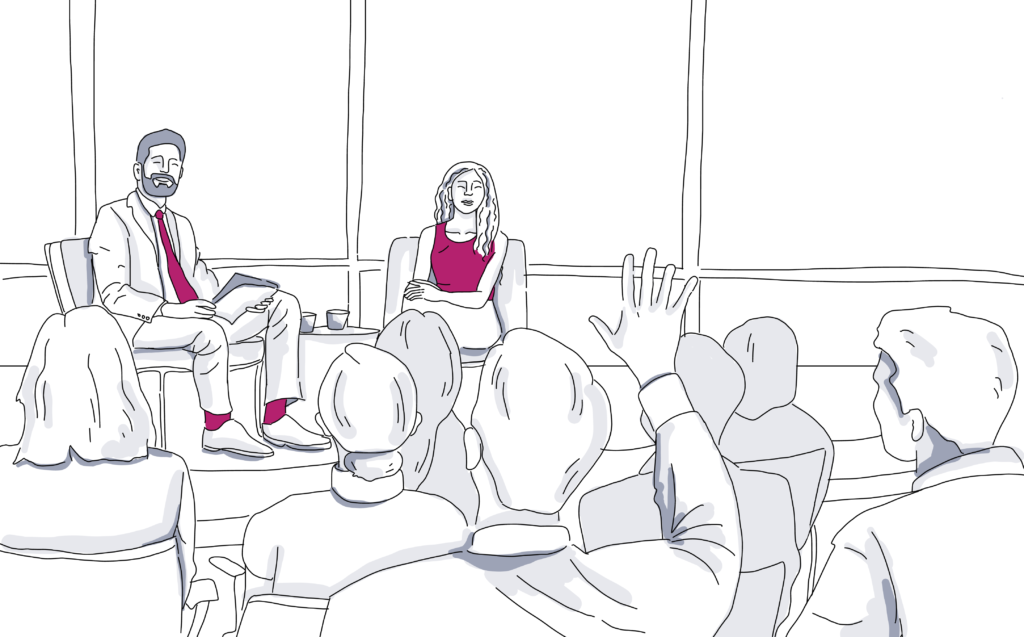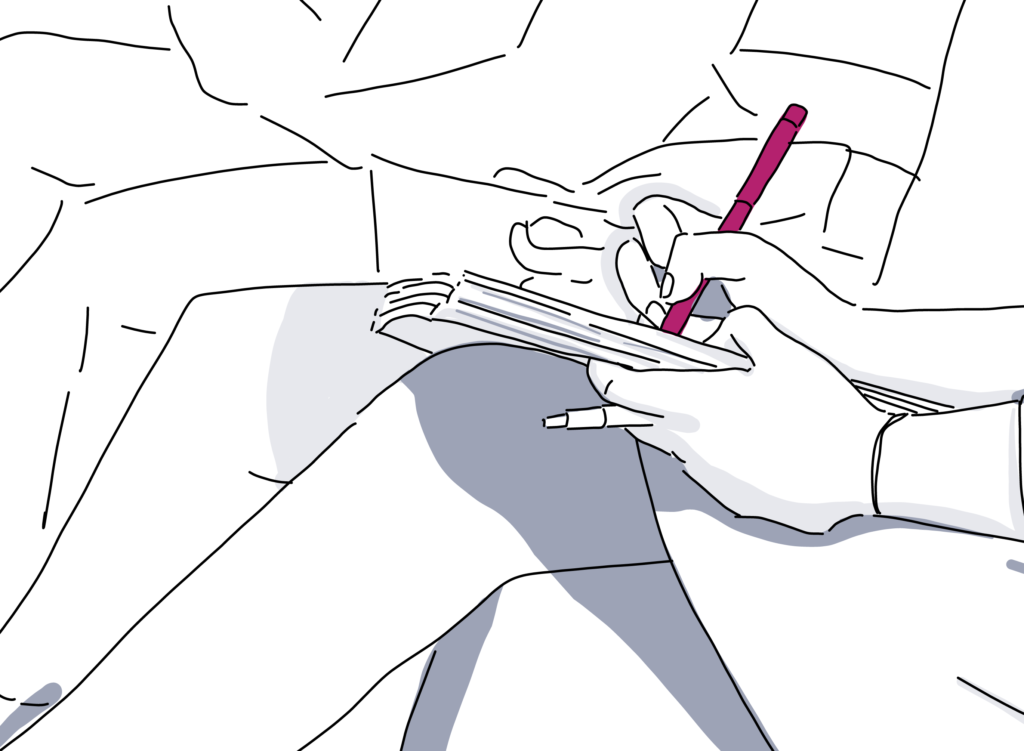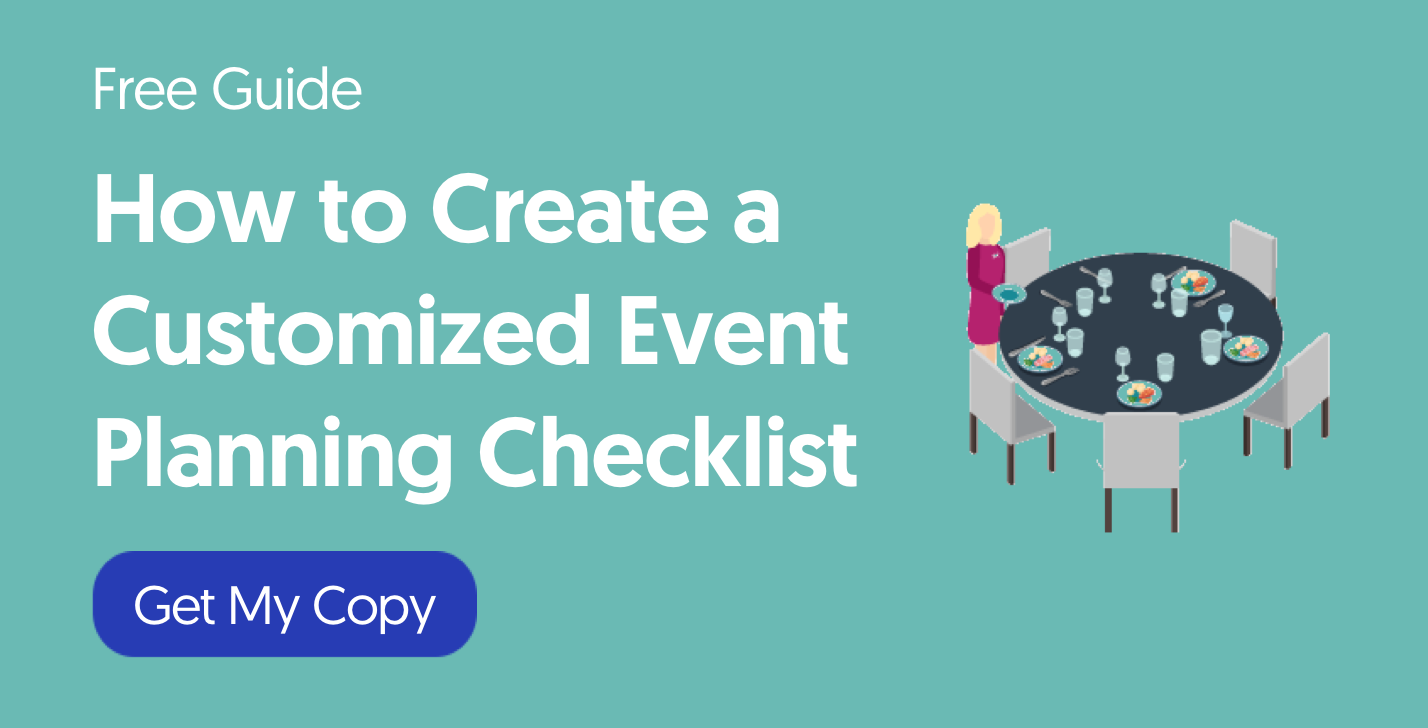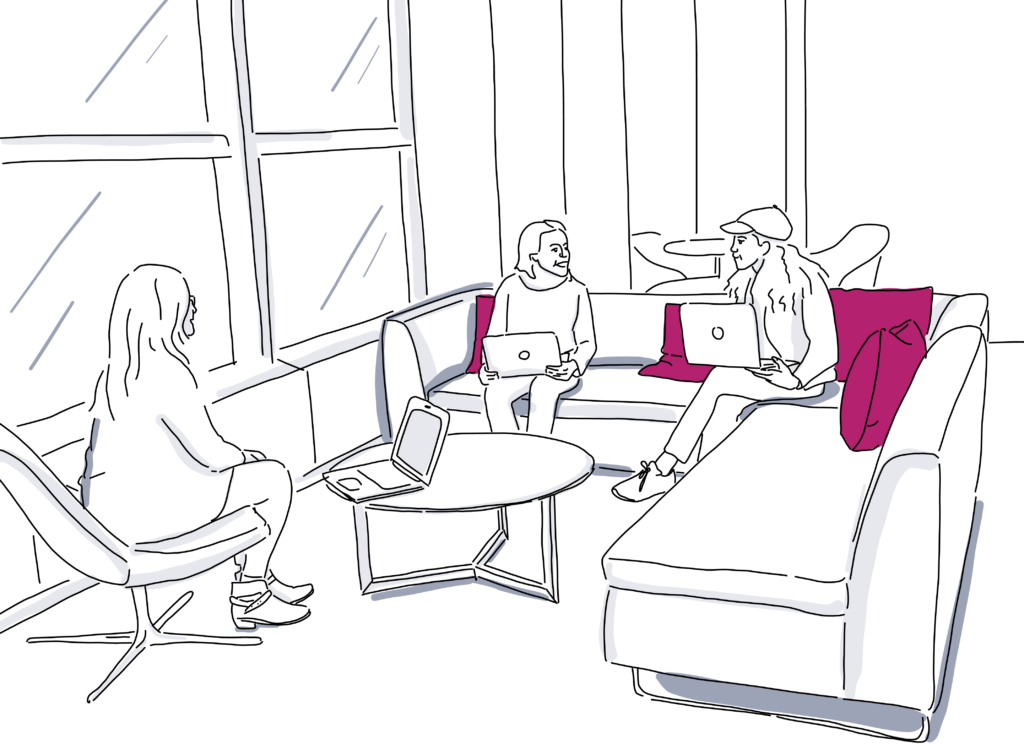
10 Simple Ways to Get The Most Out of Your Q&A Session
For both the seasoned and the occasional presenter, the Q&A session provokes anxiety and even fear. As Elon Musk recently found out, even the most well-prepared and organized presentation can go off the rails when the speaker is confronted by irrelevant information, non-questions, or even hostility.
Yet, the Q&A session is an essential tool. It’s a way to truly make your work a subject of conversation and a way to connect with your audience. With a bit of creativity, you can use the Q&A session to transform and elevate your talk.
Here are some ideas for how:
1. Know why and what you’re doing
Building Q&A into your talk fundamentally changes the dynamic between you, the speaker, and the audience — in a good way. We as speakers sometimes forget that the point of the presentation isn’t to let us talk. It is to create an exchange of views and information. Q&A sessions transform the presentation from an empty exercise in lecturing to a real and fruitful learning experience.
- When presentations are interactive, members of the audience are significantly more likely to pay attention, to stay engaged, and to stay tuned in.
- Q & A shows how your work is being perceived by others
- Q & A allows you to get more information out about your product or topic.
2. Timing, timing, timing
It is easy to think of the Q&A as an afterthought, although it is anything but!
At an absolute minimum, budget 25% of your total time to the Q&A session. Don’t give in to the temptation to get caught up in the flow of your presentation and go over speaking time. You will get more information out, and in a more digestible format, during Q&A. Moreover, consider not bunching all your Q&A time to the end, but plan for some interactive Q&A sessions throughout your speaking time (see tips 6 & 7 below!)
3. Make a list of potential questions (and answers)
As you prepare the presentation, keep in mind the audience and what they’re looking for. Try and see things from their perspective. What questions might they have? First, brainstorm at least 5-10 key questions (depending on the length of your presentation). Then, prepare answers to them. Keep the answers short and direct.

4. Keep some slides in reserve specifically for Q&A
Ever write a presentation and find that some slides go into too much detail and detract from the flow of the presentation? Don’t throw them out. Keep them on hand for the Q&A session. When a question comes up that is more in-depth, pull out your prepared slide and look like an absolute ace for having the information ready!
5. Neutralize trouble with openness
When you receive a relevant, thoughtful question that allows you to talk about your product, answering it is easy. But what if you get an irrelevant question, a meandering one, or, even worse, a hostile one? Even these challenging situations can be turned to your advantage.
- Thank the person asking the question regardless. This is especially effective for neutralizing hostile questions posed because the asker is showing off. By thanking them for the new perspective they’re providing and promising to look into their perspective in the future. This shows your openness without giving up your authority.
- If possible, pivot irrelevant questions toward something else that you do want to address in your Q&A, but have not had a chance to. One technique for doing that is to rephrase the question: If I understand right, the question is¦ and then pivot toward the question you want to answer. Also, works for situations when you can’t quite hear the question, the asker has a strong accent, or you’re just not really sure what they’re asking!
- Prep an answer for odd and inappropriate questions that allows both you and the asker to save face. For example, you might say, ˜That’s a great question and although I don’t feel it’s appropriate to answer at this time, I’d be happy to address it one-on-one after the session.’
All of these strategies reinforce your authority in the room. Others in the audience will be able to tell that the question is irrelevant or hostile. And they will appreciate your poise in handling such questions effectively.

6. Use software to revolutionize Q&A
Although the above tips will already get you an effective Q&A session, tech can help you knock it out of the park.
Use software that makes interacting with your audience, collecting and fielding questions, a cinch. Instead of a mic, invest in tools that allow everyone to submit a question via their mobile devices. This used to be done via a system called clickers. Clickers were clunky, expensive, and required maintenance.
Currently, you can invest in a software package that will allow your audience to submit questions or answer a poll on their mobile devices. The cost (to you or your company) is minimal; the benefits to engagement are huge. Because these systems allow your audience to answer a question in real time, you can poll your audience and show them the results, sparking true conversation and idea-building.
7. Democratizing discussion
Using live Q&A software for your software means that you are no longer locked into using Q&A at the end of your talk.
Instead, you can deploy questions before, during, and after your talk to create a feedback system that will deliver maximum insight and exchange for you and your audience. You can:
- Ask your audience to submit their questions ahead of time. Although you’ll get some unrelated questions, this is a great way to go outside your own head and really figure out what your audience wants to know.
- Allow your audience to vote on the submitted questions. By letting people upvote their favorites, you will end up with a list of priority questions ahead of time.
- Rewrite two or three of the submitted questions as a multiple-choice poll; administer the polls in the beginning and middle of your talk.
- After each such mini-poll, ask audience members to discuss results in small (5-7 persons) groups before bringing the room back together.
- Put your closing remarks AFTER the Q&A. Whether you have one Q&A session at the end or intersperse questions, polling, and discussion, delivering your closing remarks after the Q&A reasserts your control of the information and allows you to underline the conclusions of the discussion. Just make sure to keep it short and direct!
The result will be a more democratic, open discussion that will keep your audience fully engaged through the entire presentation period. Most experts agree that the average human will start tuning out after a maximum of 20 minutes; even the most talented speakers will lose their audience for chunks of time. On the other hand, reorganizing your presentation so that it is punctuated by shorter Q&A sessions and group discussions following strategic polling will keep your audience on their toes the entire time!

8. Gain control
The great thing about using audience response software is that it can help you collect and sift through questions ahead of time. Or conduct real-time polling, putting you in control of the room. By previewing at least some questions ahead of time, you not only give yourself a chance to prep, you can also weed out hostile and irrelevant questions ahead of time.
9. Leverage anonymity
Another positive aspect to using software with your Q&A session is that you can enable people to either ask questions anonymously (when they submit them before the talk) or provide their opinion anonymously (when they vote in a real-time poll). Because the input is anonymous, there’s no risk or judgment from peers or bosses, and people feel liberated to pose great questions.
10. Practice, practice, practice
As with anything else, practice makes perfect. Or, if not perfect, at least better.
Even with the best structure and preparation, Q & A sessions come with some uncertainty and will require thinking on your feet. When you practice your presentation, practice the Q & A as well: ask a few friends or colleagues to sit in your audience and to throw questions at you.
As you can see, the Q & A session is not something to fear, but a key tool for making sure your presentation really gets its point across. The more well-developed, active, and engaged your Q & A session, the more successful your overall presentation. Active engagement has been shown to boost attentiveness, understanding, and retention of the presented information.
Whether you group your Q&A session at the end, in the traditional format, or experiment with other styles, an effective Q & A session will improve your audience’s understanding of your material. It will create a more democratic and collaborative atmosphere, allowing people to see how their thoughts compare with others. At the same time, members of your audience will feel that their individual questions and concerns are being addressed. Even individuals who are reluctant to speak up feel empowered and everyone feels more committed and involved in your project.
Don’t take it from us: tell us what you do to maximize a Q&A session. Give us a shout on Facebook or Twitter.
